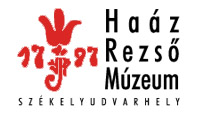Kovács Petronella (szerk.): Isis - Erdélyi magyar restaurátor füzetek 17. (Székelyudvarhely, 2017)
Domokos Levente - László Károly: A berethalmi evangélikus templom sekrestyéjében álló kandalló restaurálása
Additional examination is still required on the basis of the experience of the analysis have been carried out so far. To determine the inorganic components of archaeological textiles soil testing and artificial aging of reference samples will be carried out to get a more detailed picture about the possibilities of identification of mordant-components found in historical textiles. For identification of the dyes, thin layer chromatography and high-performance liquid chromatography-mass spectrometry (HPLC-MS) will be used Magdolna Békési-Gardánfalvi Graduated as Teacher of Chemistry and Environment PhD student Dr. Sándor Fehér Docent Dr. habil Tamás Hofmann Docent Translated by: The Authors Petronella Kovács Conservator versus micro-organisms In the last twenty years, several crypts and ossuaries have been discovered in Flungary in different churches. Their excavations were carried out by local museologists and anthropologists, only in some cases were conservators present on the site. The conservators of the Hungarian National Museum - National Centre for Conservation and Conservation Training (HNM-NCCCT) and the students of the Hungarian University of Fine Arts were involved in the conservation of the finds. The study reviews the experiences of the excavations and conservation of organic remains from four different sites, between 1994 and 2011. Some of the typical problems, the treatments applied for disinfection, the materials and methods used for conservation and the conditions of exhibition and storage for the objects after restoration are presented. The health risk of microorganisms and of the antimicrobial compounds is mentioned too. Although both bacteria and fungi harmful for the objects and for humans were present in the crypts and on the finds, the latter were greater in number and diversity, so antifungal actions were more often necessary. In the crypts mainly organic materials such as wooden coffins, textile garments, leather footwear, wooden funeral accessories, and in one case in well ventilated rooms naturally mummified bodies could be found which were all exposed to the activity of micro-organisms because of the high RH of the environment. Beside that any change in the climatic conditions at the site of the excavation and during the storage before conservation had to be considered as shocks for them. The microbiological examination and identification of species in samples taken from the air and from the finds is recommended not only on the site of the excavation but also during the temporary storage before conservation, because secondary colonizers may cause further decay on the objects. The value of fungal elements/cubic meter of air shouldn’t be significantly higher than the consensus limit (500 cts/m3). Since the dates of the four projects were different, the materials and methods used for prevention, disinfection and conservation could have been modified according to the gained experiences. Because of the limited space in refrigerators after taking the finds from the crypts organic remains were often stored temporarily in non-heated areas where the temperature was low and the RH was supposed to be lower than on the site of the excavation. Although those places seemed to be appropriate for short storage there was always a risk of the prolongation of that period for technical reasons. Primary disinfection on site by spraying the finds with 50% or 70% ethanol and the X-ray treatment of the mummies was not sufficient in the cases presented in the study, because in occasion of drastic growth of humidity due to water intrusion, activity of microorganisms or secondary infections were observed. At that sites the objects covered with plastic sheets became mouldy quite fast while on those ones which were covered with paper the infestation could not be observed. The storage of the finds in refrigerators, or evaporation of appropriate antimicrobial essential oil products in the vicinity of the objects, or use of disinfectants sprayed to the wrapping materials helped to prevent the growth of fungi. In the course of the conservation works, the mouldy textiles and leathers could be cleaned and disinfected in one step with aqueous solution of quaternary ammonium salts if the condition of the objects allowed it. For conservation of leather finds hygroscopic compounds such as glycerol or polyethylene glycol were used. For these objects and for the mummies it is very important to keep the RH not higher than 45-50% in storage and exhibition to prevent them from mould growth. Petronella Kovács Furniture and wodden object conservator DLA Translated by. Petronella Kovács and Márta Kissné Bendefy Brigitta Maria Kürtösi Mosaic and Gold - Technology with historical examples The earliest written mention of the art of making gold mosaics is related to the Lucca manuscript dating to the 8th century AD based on Greek tradition. The mosaics have shown splendour and richness, with their expensive materials as well as with their meticulous, precise working method. Early Byzantine court and church orders are rich in gold; similarly to the character of stone and coloured glass tesserae, a durable solution had to be found for their production. The gold tesserae are composites. The precious metal sheets hammered to sensitive foils had to be adequately protected from both sides. The thin gold “leaf’ 179
